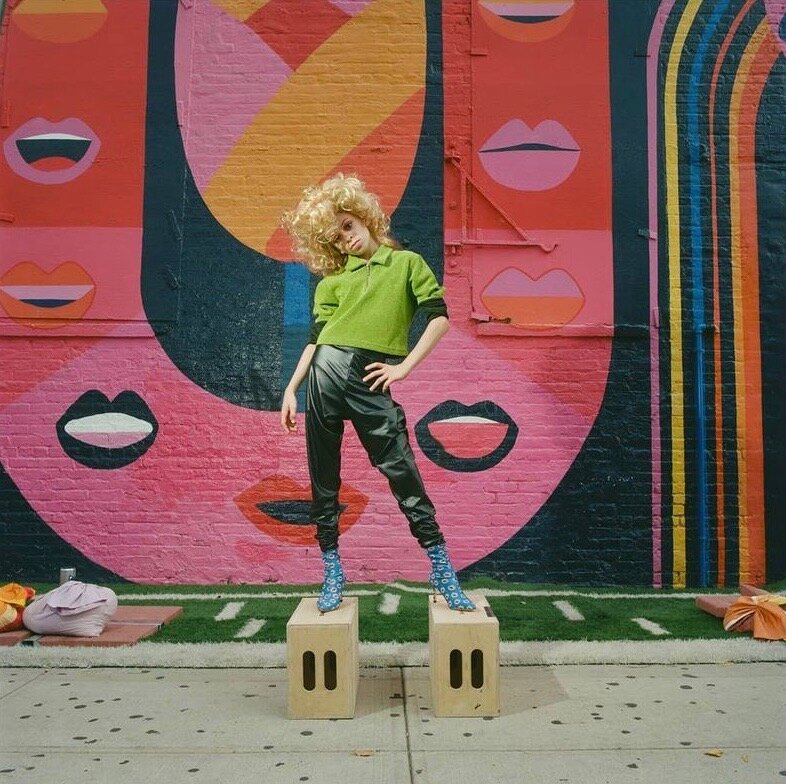Life’s a Drag
COURTESY IMAGE // @violetchachki
When someone brings up the term “drag race” what’s the first thing to come to mind — motor racing, or the Emmy award-winning show “Rupaul’s Drag Race?” If you asked Generation Z, it’s safe to assume they would think of the latter association. Before going any further, it’s important to broadly define drag and discuss all that the term encompasses. “Drag” refers to the exaggerated performance of gendered expression. A drag queen is someone who presents themselves through a stereotypically feminine lens while a drag king dresses and acts in an overtly and stereotypically masculine fashion. Drag performers are known to dress up in highly stylised ways while entertaining audiences with comedy sets, choreographed dances, or lip-syncing routines.
It’s no question that drag has become mainstream in recent years. The season 13 premiere of RPDR landed just over 1.3 million viewers, making it the most-watched episode in the franchise’s history. Winners and popular contestants from the show like Trixie Mattel, Bianca Del Rio, and Violet Chachki have gone on to have lucrative careers in the performance and fashion industry. Dozens of queens, including the three mentioned above, have recorded albums, collaborated with makeup brands, strutted down the runways of New York Fashion Week, and landed fashion spreads in magazines like “Vogue” and “Paper” — all while amassing millions of followers on social media. Due to this massive spike in popularity on social media, it is no surprise that drag has caught the attention of tech-savvy Generation Z. Sites like Instagram and TikTok have become platforms that allow young people to intricately curate their identities and experiment openly with different forms of expression. The “mainstreamification” of drag combined with Gen Z’s aptitude for social media has resulted in the two forming a unique bond.
Generation Z has been dubbed as one of the most fluid and open generations in regards to gender expression and sexuality. A survey released by Gallup found that one in six adult members of Gen Z identifies as part of the LGBTQ+ community. Additionally, roughly 75 per cent of the Gen Z population use some form of social media to communicate online. As young people begin to cultivate their identities, they have pulled from drag as a source of inspiration and utilised social media as a way to showcase their gender and fashion expression. One recent example of this manifests in the rise of “e-boys” and “softboys” on TikTok. This new trend carries a mixture of punk and drag influences. Those who fall into these categories are known for their dyed hair, painted nails, and androgynous style. Most softboys and e-boys who use TikTok fully embrace their gender-blurring roles and are regarded by their followers as aspirational figures both in aesthetics and attitude. To be an e-boy or a softboy is to exist on a screen and perform a role for their audience. This form of expression is similar to drag, as they are both exaggerated caricatures that seek to challenge gender norms and entertain an audience.
COURTESY IMAGE // @benjikro
There is also a greater shift among Gen Z towards androgynous fashion in the real world. Members of Generation Z are not letting their gender identity dictate their style. Young people have begun to highlight the importance of freedom in fashion, something which has been emphasised repeatedly within the drag community for years. In late 2020, Harry Styles graced the cover of Vogue in a floor-length, ruffled gown — making him the very first man to appear on the cover solo. Similarly, Jaden Smith, who identifies as gender-queer, has been photographed by paparazzi wearing brightly coloured skirts and dresses. While normalising fashion that rejects binary gender stereotypes is important, it is equally critical for younger generations and prominent cisgender figures who draw inspiration from drag to acknowledge the trailblazers who made it possible for them to express themselves openly online and in their day-to-day lives.
Young people and the commercial fashion industry have found drag easy to love because of its self-aware tone. The world of high fashion has traditionally been known for taking itself too seriously, but drag throws that notion out the window by highlighting the extremes of the industry while simultaneously mocking its pretentiousness. One student at the College of William and Mary, Alex Sklar ’24, offered their input on the impact drag has had on society as well as their personal style. “Part of me just likes to confuse people,” Sklar said jokingly. “I think that drag and androgyny has that sort of effect because it’s so different from binary gender socialisation. In drag, there’s this mismatch between the gender presentation and the body underneath. There’s also androgyny where they are mixing masculine and feminine and that’s something that brings a lot into my own personal fashion,” Sklar said.
For Sklar, the future of drag is a bright one. This leaves the door open for more forms of expression to flow into contemporary fashion both online and in the real world. Sklar goes on to state, “I think that the gender-binaries and the gender categories are going to keep getting more and more broken down. Not that it’s going to go away, I think there’s still a place for those binary drag performers, but I think that this conception that we have of drag being almost like a cross-dressing performance art is going to be broken down, it’s going to be a lot more about the charade aspect of it. It has the potential to be almost a mockery of gender.”
COURTESY IMAGE // @desmondisamazing
As queer culture gains mainstream acceptance, the number of establishments where drag is welcome has grown considerably. Story hours facilitated by drag queens have become staples in public libraries all across the country, introducing drag to the youngest members of society. In recent years, parents who actively challenge traditional gender norms have allowed their children to begin expressing themselves through drag. Young drag performers like 13-year-old Desmond is Amazing and 11-year-old KweenKeeKee got their start by watching Rupaul’s Drag Race, and both gained strong followings on social media. “It’s 2018 there are going to be drag kids in the world … and I’m one of them,” said Desmond after rising to fame. Earlier, Desmond won the Marsha P. Johnson “Don’t Be Outraged, Be Outrageous” Award in 2017 for his activism, inspiring other gender non-conforming young people to experiment with drag as a form of expression.
While Gen Z is notorious for their openness and total embrace of trends initiated by drag culture, it is important to highlight the history that made this unapologetic approach to style and identity possible. It is also crucial to discuss how certain widely-adopted mannerisms and fashion trends have become misappropriated over time as drag culture enters the public sphere. The history of drag dates back centuries and originally began as men cross-dressing in theater productions. Today, drag is a nuanced and multifaceted culture. Makeup trends popularised by beauty gurus like contouring, baking, cut-creases, and overlined lips all find their origins within the drag community. These techniques allowed queens to reconstruct their faces and transform into entirely new characters with unique personas.
Queer vernacular is also highly popular among young Gen Z members. The term “yas” was originated by queer people of colour involved in drag balls during the 1980s. The expression was then introduced to greater society following the release of the acclaimed documentary “Paris Is Burning” (1990). Phrases like “Bye Felicia” and “tea” also hold their origins within drag and queer culture. While appropriating drag slang and mannerisms may represent progress and general acceptance towards the queer community, the lack of understanding surrounding their historical significance should not be ignored. There is a history of hard-fought activism, politics, and race that goes behind each saying and they should not be utilised by younger generations simply because they are “trendy.” “It can erase the origin,” said Jeremy Calder, drag performer and postdoctoral fellow at the University of Colorado, to Wired Magazine. “Misappropriation comes when people lose sight of its history, and when it becomes a commodity that the originators don’t benefit from.”
Drag in its purest form is a way to free oneself from traditional social norms and have fun through various means of expression. Because of this, it is not surprising that Gen Z is so drawn to drag. Conversely, our generation must understand that queer culture isn’t simply a trend; historical context is important, and those who paved the way should not be subject to erasure. For many Gen Z people, their perception of the self exists outside the restrictions of binary gender. This gives them the freedom to manufacture and play with their identities as often as they want. As Rupaul states, “We’re all born naked and the rest is drag.”



